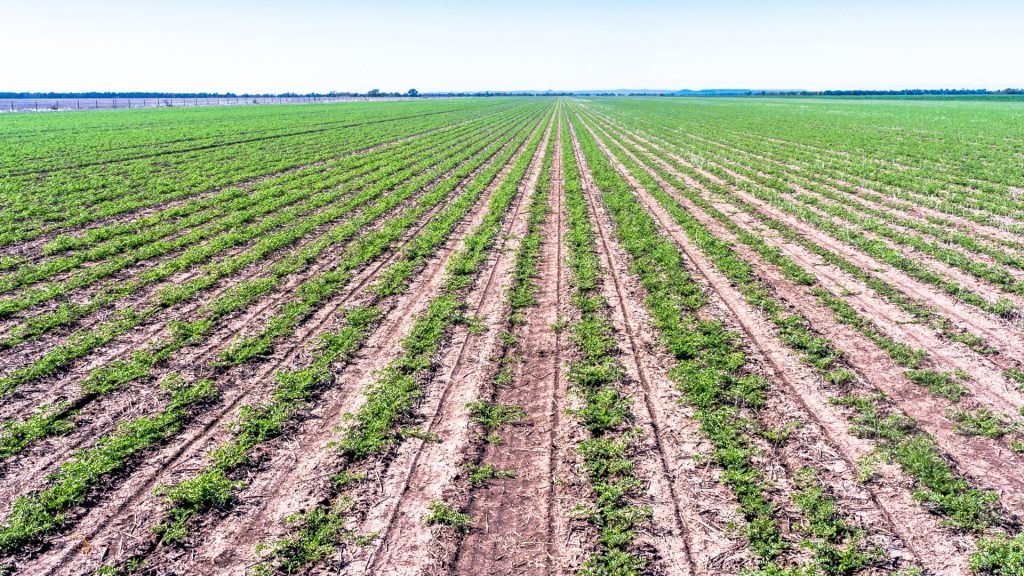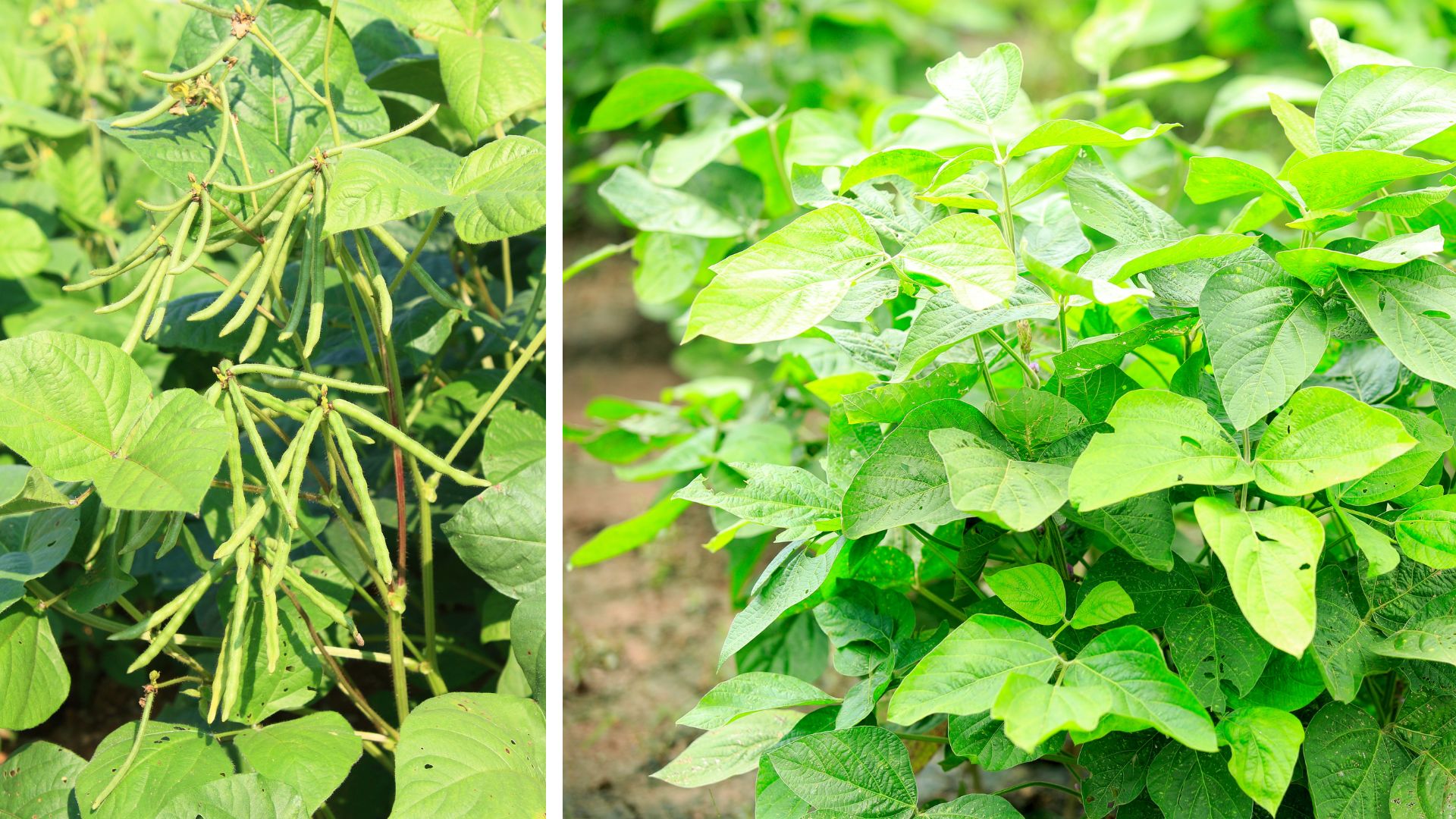Mung Bean: Plant Information, Uses, Nutritional Value and Health Benefits

This post is also available in:
This post is also available in:
![]() Español (Spanish)
Español (Spanish) ![]() हिन्दी (Hindi)
हिन्दी (Hindi) ![]() Ελληνικά (Greek)
Ελληνικά (Greek) ![]() Português (Portuguese (Brazil))
Português (Portuguese (Brazil))
Mung Bean and its Importance
The mung bean (Vigna radiata L. Wilczek) is the most cost-effective and essential pulse crop and is an annual, warm-season legume with a quick growth rate. The plant is diploid with 22 chromosomes (a genomic size of 579 Mb) and belongs to the subgenus Ceratotropis in the genus Vigna (Shiv et al., 2017). It is also known as green gram, golden gram, and moong (Parida et al., 1990; Kang et al., 2014).
The crop originated in India and is now primarily farmed in China, India, Pakistan, and Thailand (Karthikeyan et al., 2014), giving it a strategic position regarding nutritional security and crop production sustainability. It is a minor crop in most nations but is grown on 7.3 million hectares in Asia, Africa, and Oceania. India, Myanmar, China, Indonesia, Thailand, Australia, Bangladesh, Pakistan, Kenya, Uganda, Vietnam, and the drier sections of southern Europe and warmer parts of Canada and the United States produce green gram. Mung bean exports are dominated by the countries Philippines and Myanmar. 
Growth conditions of mung bean – Environmental Requirements of Mug beans
They may grow in various soils, although they prefer well-drained loams or sandy loams with a pH of 5 to 8. It matures swiftly under tropical and subtropical environments, where ideal temperatures are around 28-30°C but always over 15°C. Summer and autumn are the best times to plant the crop. It does not require much water and can withstand droughts. However, waterlogging is a problem for mung bean production. High moisture levels at maturity tend to ruin seeds that are sprouted before harvest.
Description of Mung bean plant – Mung bean plant physiology
Mung bean is a legume grown throughout Asia for its edible seeds, sprouts, translucent noodles, starch extraction, and animal feed.
The plant is annual, upright, or semi-erect, reaching a height of 0.15-1.25 m. It has a well-developed root system and is slightly hairy. The stems are multi-branched and may twine at the tips. Leaves are alternating, trifoliolate, and 5-18 cm long x 3-15 cm wide, with elliptical to ovate leaflets. Flowers are papilionaceous and pale yellow or greenish, with long, cylindrical, hairy, and pending pods. There are 7 to 20 tiny ellipsoid or cube-shaped seeds in each pod. The seeds are typically green, although they can also be yellow, olive, brown, purplish brown, black, mottled, and/or ridged. Cultivated forms are usually green or golden in color, and depending on whether or not a textural layer is present, they can be lustrous or dull.
Golden gram is a forage or green manure plant with yellow seeds, low seed output, and pods that break when they mature.
Green gram boasts brilliant green seeds; it is more prolific and ripens more evenly, with fewer pods shattering.
The importance of Mung bean – Uses of Mung bean
Mung beans can fix atmospheric nitrogen with Rhizobium bacteria found in the plant and root zone. It is a promising plant species for crop intensification and diversification due to its short lifespan, photo-thermo insensitivity, and low input demand. Mung bean is commonly intercropped with maize, sugarcane, pearl millet, sorghum, and pigeon pea and produced as a rotating crop with cereals such as wheat and rice (Li et al., 2009 Aggarwal et al., 1992).
Nutritional Value of Mung bean
Mung bean seeds have a protein content of 20.97–31.32 percent, whereas soybeans have 18–22 percent, and kidney beans have 20–30 percent.
Based on USDA, on a dry weight basis, 100g of raw mung bean seeds contain:
- 23.86 g protein,
- 1.15 g fat,
- 16.3 g fiber,
- 62.62 g carbs,
- 347 kcal
- 132 mg Calcium (Ca)
- 189 mg Magnesium (Mg)
- 367 mg Phosphorus (P)
- 1250 mg Potassium (K)
Mung bean protein is highly digested, and soaking, fermenting, and sprouting boost iron availability.
Health Benefits of Mung bean
- Mung bean is packed with many useful nutrients like Manganese, Magnesium, Phosphorous, Iron, Copper, Potassium, Zinc, and vitamins B1, B2, and B3. B5, B6.
- High Antioxidant levels with phenolic acids, flavonoids, caffeic acid, and cinnamic acid can reduce chronic disease risk.
- Antioxidants Vitexin and Isovitexin can prevent heat stroke.
- Rich in Potassium, Magnesium, and Fiber, which can help reduce blood pressure.
- Fiber and resistant starch in mung beans can aid in digestive health.
Reference
Shiv, Aalok, Ramtekey, Vinita, Vadodariya, G.D., Modha, K.G. and Patel R.K. (2017) Genetic Variability, Heritability and Genetic Advance in F3 Progenies of Mungbean [Vigna radiata (L.) Wilczek]. Int. J. Cur. Microbiol. App. Sci., 6(12): 3086-3094.
Parida, A., Raina, S. and Narayan, R. (1990). Quantitative DNA variation between and within chromosome complements of Vigna species (Fabaceae). Genetic. 82: 125–133.
Kang, Y.J., Kim, S.K., Kim, M.Y., Lestari, P., Kim, K.H., Ha, B. (2014). Genome sequence of mungbean and insights into evolution within Vigna species. Nat. Commun., 5, 1-9.
Karthikeyan, A., Shobhana, V. G., Sudha, M., Raveendran, M., Senthil, N., Pandiyan, M., and Nagarajan, P. (2014). Mungbean yellow mosaic virus (MYMV): a threat to green gram (Vigna radiata) production in Asia. Int. J. Pest Manag., 60, 314-324.
Li, Y., Wei, L., Ruiping, R., Shubin, Z. and Xu, S.G. (2009). Facilitated legume nodulation, phosphate uptake and nitrogen transfer by arbuscular inoculation in an upland rice and mung bean intercropping system. Pl. Soil., 315(1-2): 285-296.
Aggarwal, P.K., Garrity, D.P., Liboon, S.P. and Morris, R.A. (1992). Resource use and plant interactions in a rice mungbean intercrop. Agron J., 84: 71– 78.
https://fdc.nal.usda.gov/fdc-app.html#/food-details/174256/nutrients









































































